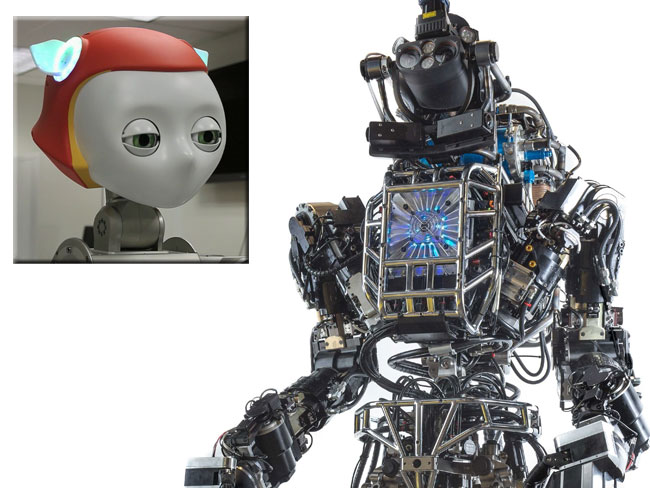
Google has revealed it has taken over eight robotics companies in the past half a year, in an effort to create a new operating unit dedicated to robotics technology. Google’s statement was released last week, following the Amazon’s announcement of its ‘Prime Air Project‘, aimed at expediting deliveries of goods using electrically powered multirototr unmanned aerial platforms but a week later it was clear that Google is after much more than UAVs.
The first seven acquisitions were small, highly specialized companies. On on Friday the internet giant confirmed that it had completed the acquisition of Boston Dynamics, a legged robotics specialist that have developed unique robotics projects for the Pentagon for years – robots the can crawl, walk, run and jump. Google said it will continue to honor the contracts Boston Dynamics has been doing for the military. Google executives said the company would honor existing military contracts, but that it did not plan to move toward becoming a military contractor on its own. [nonmember]Subscribe to read our commentary on the potential risks.[/nonmember]
Apart from Boston Dynamics, Google has gathered seven companies in recent months, all are now grouped under the company’s robotics effort headed by Andy Rubin, who was previously in charge of the Android operating system. From its based in Palo Alto, California, Google’s robotics projects will run the companies located in San Francisco area and in Japan – one of the world’s leading nations in the field. According to the New York Times, the recent deal is “the clearest indication yet that Google is intent on building a new class of autonomous systems that might do anything from warehouse work to package delivery and even elder care.”
Boston Dynamics’ specialization in legged and humanoid robots will align well with the other companies Google have acquired under its robotics portfolio; among those, four are involved in different technologies related to humanoid robots, including manipulator arms, 3D vision and ‘friendly’ robotic assemblies, used for operations and control of such robots.
Founded in 1992 by Marc Raibert, a former professor at the Massachusetts Institute of Technology (MIT), Boston Dynamics was involved in numerous research programs. In recent years the company was pushing the limits of legged robotics. Among their recent successes were LS3, a legged ‘mule’ that has entered advanced testing with the Marine Corps, and ATLAS, a humanoid robot used by DARPA for the advanced phase of the DARPA Robotics Challenge (DRC). DRC is a two-year contest creating robots that can replace humans in operating in hazardous disaster areas such as the Fukushima or Chernobyl nuclear reactors.
ATLAS is a hydraulically powered robot in the form of an adult human. It is capable of a variety of natural movements, including dynamic walking, calisthenics and user-programmed behavior. Based on the Petman humanoid robot platform, Atlas was modified to meet the needs of the DARPA Robotics Challenge. Seven teams will be using an Atlas to participate in the Trials.
[ismember]Given the ultra-sensitive sensors already available, empowered by the ‘wisdom of the crowd’ of many networked bots, Google should be responsible to ensure its robotic venture doesn’t grow out of control. While ‘Cyberdyne(*)’ style robots are still far away, future robots could also pose risks to humans, when exploited by malicious bots, or taken over by criminals or terrorists. Such robots would be potentially superior over humans in a number of areas, they can overpower a human, think and communicate faster with others, thus posing a security or even military concern, when exploited by cyber criminals or terrorists.
As many other Google services, advanced robotics boosted by Google’s technological interest and financial support, robotic technologies are likely to evolve from this venture could touch many areas of our daily lives. Such technologies would also be useful for the military and law enforcement, but are also likely to be exploited by insurgents, terrorists and hackers, as was the case of every modern internet-based technology developed in the past 20-30 years.
Many internet-based services, such as the mobile phones, powered by the open for all Android operating system or Google Maps, providing spy-satellite intelligence to everyone – are now widely used by insurgents remotely controlling weapons and IEDs, or acquiring target coordinates, accurate enough to guide rockets and missiles to their destination. Developing the future robotics should be more careful, realizing the potential havoc they would inflict, at the hands of terrorists and cyber criminals.[/ismember]

















